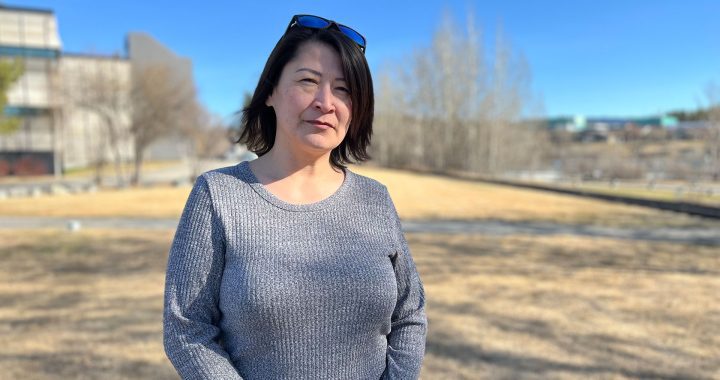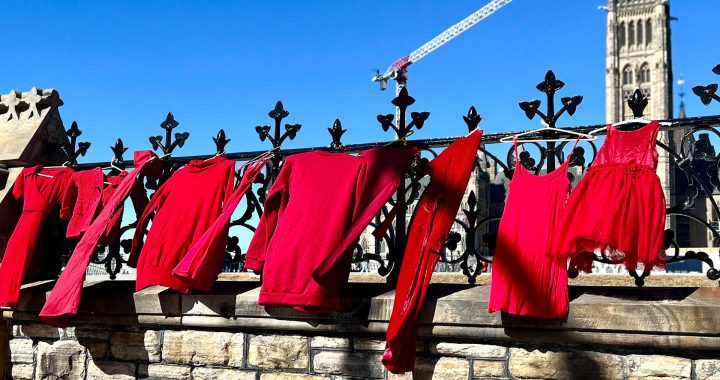In a crawlspace under her home, Karen Felker points to beams that move when the ground thaws.
The damage was caused by last year’s flood. This spring marks the second anniversary of the historic flooding of Hay River in the Northwest Territories and the road to recovery is still ongoing.
“The contractors were also supposed to come here, spray it, and remove rotten boards,” she said.
Felker didn’t have insurance for her home on Vale Island in the town of Hay River, instead, she depended solely on territorial disaster relief services.
“The work that was done very poorly, you could tell it was rushed,” Felker said. “I couldn’t be on them all the time to go check to see whether or not they were doing the scope of work that they’re supposed to be doing, right?”
The situation is not unusual – some houses were considered ineligible for insurance because they are located on a flood plain.
Felker’s daughter Ashley rents a house near her mother in West Point First Nation, where approximately 75 residents have been impacted by flooding.
Her canary yellow Mustang with dried mud lines up to the dashboard sits idle next to a run-down shed that use to store her baby’s keepsakes, all ruined by the flood.
The federal government has pledged over $1.16 million to enhance the protection of Hay River’s west channel from flooding. This will involve the essential reconstruction of berms.
It’s the same story across the river, on K’atl’odeeche First Nation where it’s easy to spot the visible scars left behind from natural disasters.
Agnes Fabian was working in British Columbia during the flood. She said that she contacted the band office to see if ask her son Wade could handle the repairs.
“The water had gone about halfway up the stairs going up to the living room,” Fabian said. “They (contractors) opened all the windows and the doors and left them opened so I asked if they could board it up just to secure the house and that hasn’t happened.”
Fabian still has outstanding payments on the house, even though it’s not inhabitable.
“Because the house was gutted and the house is so unlevel and unsteady you can feel the house shifting as you walk through the home,” she said.
With long housing waitlists and nowhere to go, Fabian is forced to live with her elderly mother.
Many residents in this area are still displaced and living in hotels, including Chief April Martel from KFN.
While the reserve communicates directly with Crown-Indigenous Relations and Northern Affairs Canada, during the flood, KFN received disaster assistance from the territorial government, but the delivery of services was complicated.
Martel said she explained to all levels of government that homes were not properly inspected from a previous flood in 2018 and some homes have been rotting ever since.
“They didn’t properly assess the homes. The government got a third party to do the assessment of our homes on KF, andd it wasn’t properly assessed,” Martel said. “It’s okay to use GNWT for fire and emergency management and flood emergency management, but the part of rebuilding in our community, having a say is what we want.”
Since taking over the rebuild, KFN has hired Clark Builders to evaluate and fix the damage to 60 homes caused by the flood.
The community is also coping with the aftermath of last year’s unprecedented wildfire season. Foundations are being prepared, and new homes are being transported into KFN.
“It’s good to see homes arriving in the community,” Martel said. “Internally there’s a lot of work that we’re doing, like, to make sure there’s a plan in place before they move in.”
This includes ensuring residents have furniture, appliances, and mental health resources.
KFN is still working with governments on infrastructure rebuild.
“There was a lot of damages to the road and infrastructure, the culverts and the signs, all our signs, like, on the highway, that was all burned from the fire too,” Martel said.
Meanwhile, the territorial government is gathering feedback on flood recovery through an online survey to enhance territorial and community government plans.
Emily King, the director of the territorial emergency management organization, emphasized the government’s proactive approach in implementing standard operating procedures without delay. The post-event evaluation for the Dehcho flood in 2021 lasted almost three years.
“We’ve noticed that the public needs a bit more clarity on what an evacuation notice means, and what they should be doing when there’s a notice issued, likewise for the alert and the order as well,” King said.
As for financial help, King mentioned that by December 2023, there have been about 150 claims totaling around $2.9 million for the Hay River flood.
King stated that as the federal government updates its disaster financial assistance policy, the territorial government will do the same.









